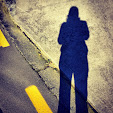First draft of photo essay.
I took to the streets and shot a dozen or so images, each of them featuring yellow objects. I then selected the best eight. For this exercise, I was inspired by the Geoffrey Batchen quote in Snapshots - one of week 3's readings. I have studied for two of his papers and am very interested in his theories around vernacular photography and its study using the conventions of art history. For this project I would like to explore his theories around the everyday in photography (or, as Batchen would have it) visual culture. (Durden, 2013)
I wanted to further investigate the 'boring generic snapshot'. (Durden) As a jumping off point, my yellow objects constraint resulted in a useful exercise since the focus of only choosing yellow items allowed me to remain reasonably detached in my approach, which in turn lent itself well to the concept of the Flâneur.
The results ended up reminding me of Instagram so when I downloaded the images, I deliberately cropped them to squares to play on the Instagram look. With that in mind, I also amped up the contrast in Photoshop although I stopped short of applying any filters until I am clearer about where this project is going. I am interested in the act of photography not only as a means of creative expression but also in it's relationship to mourning and death (Barthes, 1980) as well as Batchen's Foucaultian proposition - that photography exists within a discursive space and relies on our interaction with it for it's production. I feel that these theories have a massive influence on the sort of design aesthetic I gravitate towards. That is retro, domestic and nostalgic-feeling design.



.JPG)
















.JPG)

